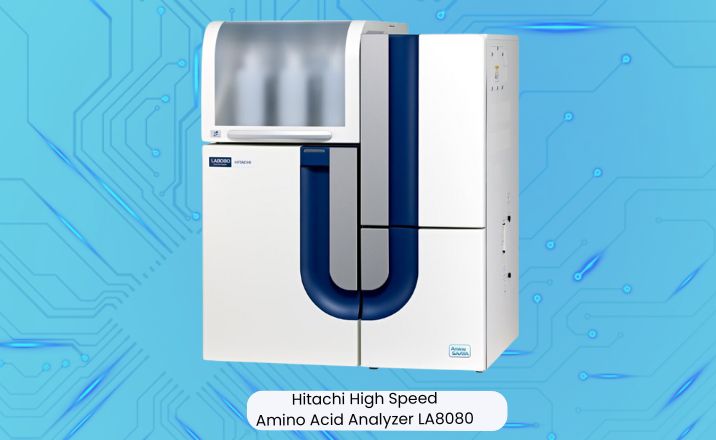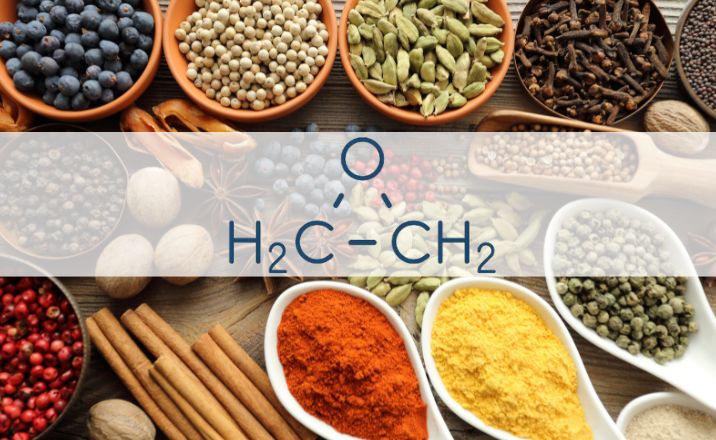Amino Acid Profiling: A Vital Key to Understanding the Nutritional Value of Infant Formula Powders

In the intricate world of infant nutrition, Amino Acids play a starring role. As scientists and researchers, we’re acutely aware of the human body’s complex composition: 70% water, 20% proteins, and 10% carbohydrates, minerals, and fats. This breakdown highlights the critical importance of proteins – and by extension, amino acids – in human development and health. Through amino acid profiling, we can precisely assess and ensure the nutritional adequacy of infant formulas, vital for optimal growth and development.
The Building Blocks of Life: Proteins and Amino Acids
Proteins are the heroes of growth and development, forming the foundation for muscles, bones, hormones, and enzymes. These mighty molecules are composed of 20 different types of amino acids, with 9 classified as essential – meaning our bodies can’t produce them independently. This biological fact underscores the importance of dietary amino acid intake, especially for infants. [2].
A Lifelong Necessity
The amino acid journey begins even before birth, with foetus requiring approximately 1.0-1.5 g/kg for proper development. As we grow, so do our needs:
- Children: 200-800 mg/kg/day
- Adults: 84 mg/kg/day.
However, a deficiency in these crucial nutrients can lead to various health disorders, emphasizing the need for adequate supply throughout life. [3].
The Infant Nutrition Challenge
While adults can usually meet their amino acid needs through diet, infants face a unique challenge. Milk serves as the primary source of essential macronutrients for babies, but a startling statistic reveals that only about 35% of infants worldwide are breastfed at 15 months of age.
This creates a critical need for complementary nutrition, especially as infants grow and their energy requirements increase:
- 6-8 months: Additional 200 kCal/day needed.
- 12-23 months: Additional 500 kCal/day needed. [4].
The Power of Nutritionally Complete Infant Formula Powders
Enter the solution: nutritionally complete infant formula powders. These carefully crafted formulas are designed to provide essential amino acids and other vital nutrients, ensuring healthy growth and development for infants.
Global Regulatory Standards: Ensuring Quality and Safety
Recognizing the paramount importance of infant nutrition, global organizations have established stringent regulations for infant food formulas. Let’s explore these guidelines:
- World Health Organization (WHO)
- Recommends exclusive breastfeeding for the first six months to provide essential nutrients during this critical period.
- Food Safety and Standards Authority of India (FSSAI)-(Food Safety and Standards (Foods for Infant Nutrition) Regulations, 2019)
- Mandates high-quality protein (at least 85% casein) in infant formula.
- Requires only L-forms of amino acids for optimal absorption.
- Allows Taurine and Carnitine as optional ingredients.
- Requires declaration of added amino acids on food labels. [5].
- FAO/WHO-(Recommendation 2007)
- Recommends 200-376 mg/kg/day of essential amino acids for children aged 0-5 years. [6].
- European Union (EU)-(Regulation (2016/127)
- Specifies compositional requirements for indispensable and conditionally indispensable amino acids and L-Carnitine. [7].
- United States FDA- Regulation (21 CFR 106.96)
- Requires that infant formula protein should be of good quality as it supports normal physical growth as the sole nutrition source. [8].
- Codex Alimentarius-(CODEX STAN 72 – 1981)
- Provides guidelines for adding isolated amino acids to enhance nutritional value. [9].
- Special Cases
- For neonatal care, allergies, and metabolic disorders:
- FAO and FSSAI recommend hydrolyzed whey/casein proteins or 100% free L-amino acids.
- Soy Protein Isolate formulas:
- Minimum 2.25 g/100 kcal (0.5 g/100 kJ) protein required
- Clinical evaluation needed for formulas with less than 2.25 g protein/100 kcal. [9].
- For neonatal care, allergies, and metabolic disorders:
Ensuring Quality: Mandatory and Optional Analyses
To guarantee the safety and efficacy of infant formulas, several analyses are required:
- Protein quality assessment (using human milk amino acid pattern as the standard)
- L-amino acid content determination
- Amino acid profiling for amino acid-based infant formulas
Optional analyses include evaluating levels of L-taurine, L-carnitine, and added essential amino acids. [10-13].
Cutting-Edge Solutions: CoE-HTIN-Envirocare’s Comprehensive Services
At the forefront of infant formula quality assurance is the Center of Excellence (CoE) at Hitachi High-Tech India (HTIN) and Envirocare Labs. Utilizing the Hitachi High Speed Amino Acid Analyzer LA8080 AminoSAAYA, CoE offers:
- Precision Testing: Accurate identification of 20 essential amino acids and 40 free amino acids in different matrices.
- Compliance Support: Assistance in meeting FSSAI, EU, and US regulatory standards.
- Nutritional Assurance: Evaluation of amino acid profiles using cutting-edge Ninhydrin post-column derivatization techniques.
- Tailored Solutions: Customized testing and reporting options for food industry clients.
- Expert Consulting: Insights on nutritional quality and control based on amino acid analysis results.

The LA8080 Amino SAAYA analyser (Hitachi Amino Acid Analyzer) provides rapid and reliable amino acid analysis in just 30 minutes, ensuring accurate results through advanced techniques. [14].
Conclusion: A Future of Optimal Infant Nutrition
The role of amino acid-based nutritionally complete infant formula powders in ensuring optimal infant growth and development is undeniable. As global standards evolve, the advanced analytical techniques and comprehensive services provided by institutions like CoE-HTIN-Envirocare are crucial in maintaining the quality and safety of infant nutrition products.
For scientists and researchers in the field, staying abreast of these developments and leveraging cutting-edge analytical tools is essential. By doing so, we continue to improve infant nutrition, contributing to the health and well-being of future generations.
It’s worth noting that the Center of Excellence (CoE) at Hitachi High-Tech India (HTIN) and Envirocare Labs extends its expertise beyond infant nutrition, providing comprehensive Amino acid profiling for food and feed testing, pharmaceutical testing, and agroscience services. This broader application of their advanced technology underscores the far-reaching impact of precise amino acid analysis across multiple industries.
Sources:
- https://www.ajinomoto.com/sustainability/pdf/2020/SDB2020en_012-014.pdf
- https://www.hitachi-hightech.com/global/en/knowledge/analytical-systems/hplc/basic-course.html
- https://doi.org/10.3390/nu16091263
- https://www.cambridge.org/core/journals/british-journal-of-nutrition/article/amino-acid-scoring-patterns-for-protein-quality-assessment/AD3A6E637DF0E6E8900B289456321C86.
- Food Safety and Standards (Foods for Infant Nutrition) Regulations, 2019.
- D. Joe Millward, British Journal of Nutrition (2012), 108, S3–S21.
- Official Journal of the European Union, 2.2.2016, Commission Delegated Regulation (EU) 2016/127.
- Requirements for quality factors for infant formulas, 21 CFR 106.96, 2024.
- Standard For Infant Formula And Formulas For Special Medical Purposes Intended For Infants, Codex Stan 72 – 1981.
- Assuring the Quality of Protein in Infant Formula; J. C. Wallingford, Advances in Nutrition 14 (2023) 585–591.
- Food Safety and Standards (Health Supplements, Nutraceuticals, Food for Special Dietary Use, Food for Special Medical Purpose, and Prebiotic and Probiotic Food) Regulations, 2022.
- https://www.fssai.gov.in/upload/advisories/2020/01/5e159e0a809bbLetter_RDA_08_01_ 2020.pdf
- https://pubmed.ncbi.nlm.nih.gov/16902329.
- https://www.hitachi-hightech.com/in/en/products/analytical-systems/hplc/amino-acid-analyzers/la8080.html.






